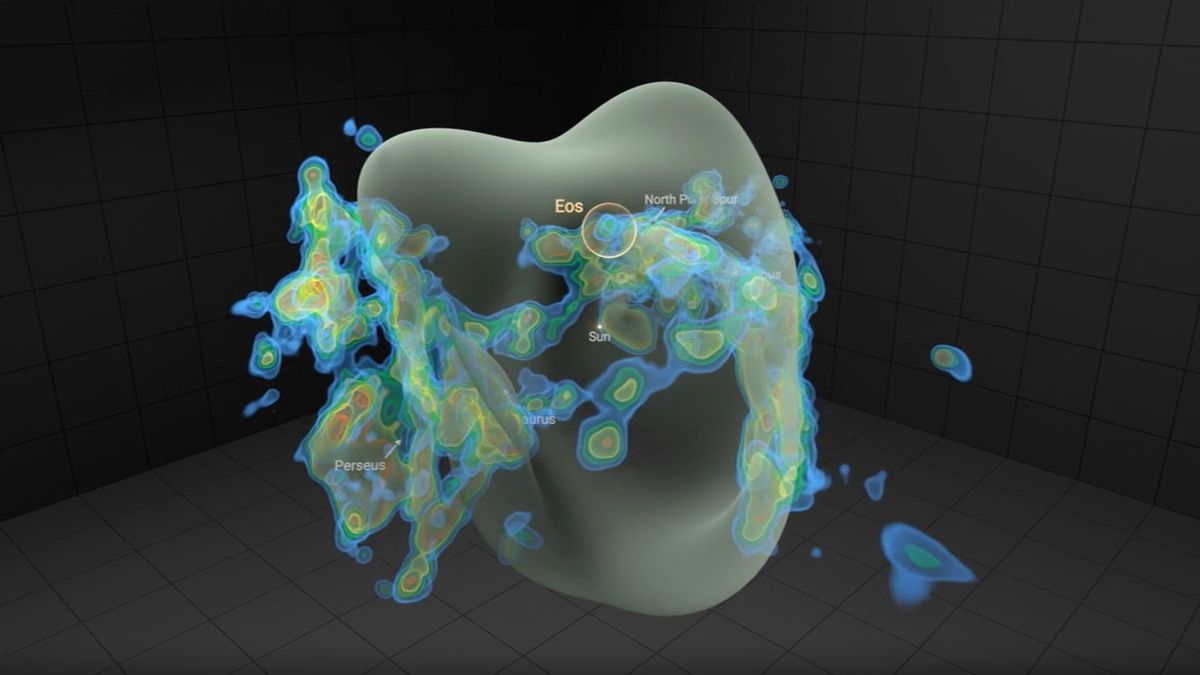Now Reading: Enormous Glow-in-the-Dark Cloud Near Earth Astounds Astronomers
-
01
Enormous Glow-in-the-Dark Cloud Near Earth Astounds Astronomers
Enormous Glow-in-the-Dark Cloud Near Earth Astounds Astronomers

Fast Summary:
- Revelation: Astronomers have identified “Eos,” the closest known molecular cloud too Earth, located 300 light-years away.It is indeed a hydrogen gas structure,crescent-shaped and spanning roughly 100 light-years wide.
- Detection Method: eos eluded detection due to its lack of carbon monoxide but was identified using the fluorescent glow of hydrogen molecules – an innovative approach potentially revealing similar hidden clouds in the galaxy.
- Significance: By studying such clouds, scientists can better understand star and planet formation processes by mapping hidden hydrogen reservoirs in the universe.
- Shaping Factors: Eos’ crescent shape likely resulted from interactions with nearby cosmic features like the North Polar Spur, a vast region of ionized gas influenced by supernovas or stellar winds.
- future Evolution: Simulations suggest that cosmic radiation will lead to Eos’ evaporation in about 6 million years. Its potential for star formation remains uncertain as no major activity has been observed so far.
- Exploration Ahead: Researchers are conceptualizing a NASA mission called the “Eos space telescope” to further study molecular hydrogen content across similar galactic structures.
Image: An artist’s illustration depicts what Eos would look like if visible from Earth’s night sky, showing its approximate size and crescent form.
!An artist’s conception of what the newfound Eos molecular cloud would look like
Indian Opinion Analysis:
The discovery of eos marks meaningful progress in understanding how matter recycles within galaxies and contributes to forming stars and planets.For India’s growing community of astrophysicists and space researchers, this presents opportunities for collaborative global research on cosmic phenomena. As India advances with projects like Aditya-L1 (to study the Sun) and expands indigenous satellite capabilities, such findings underscore why targeted exploration technologies are essential for unraveling our galactic neighborhood.
Moreover, methodologies employed here – relying on unconventional data analysis rather than conventional chemical markers – could offer valuable lessons for countries aiming at low-cost yet innovative astronomy missions. If successful international missions like “Eos Space Telescope” materialize or lead to widespread changes in observational approaches, it will be vital for Indian institutions to integrate such paradigms into future programs.
As global astronomy efforts grow increasingly interdisciplinary,India’s investment in space sciences could position it as a critical player contributing unique perspectives while leveraging such discoveries toward new collaborations.























